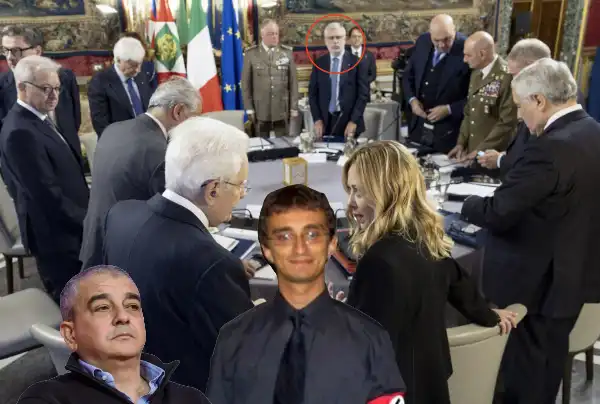
DAGOREPORT - CRONACA DI UN COMPLOTTO CHE NON C’È: FRANCESCO SAVERIO GAROFANI, CONSIGLIERE DEL…


da http://www.smithsonianmag.com
Nelle grotte brasiliane vive un gruppo di insetti particolare, appartenente alla specie "Neotrogla": le femmine hanno il pene, i maschi la vagina.
Le femmine montano il maschio con il loro organo e assorbono il suo sperma. E' il primo caso di genitali al contrario, nel mondo animale. Il ricercatore Rodrigo Ferreira scoprì la specie vent'anni fa, in una spedizione, ma i campioni recuperati erano troppo giovani. Recentemente si è tornati sul caso e in un laboratorio di Ginevra hanno scoperto che la femmina ha un pene interno, che tira fuori solo nel periodo di accoppiamento, e che il maschio ha una specie di marsupio-vagina.
Il pene della femmina succhia il seme, invece di spruzzarlo. Se il maschio tentasse di staccarsi, gli si strapperebbe l'addome e perderebbe i genitali.
L'accoppiamento dura fra le 40 e le 70 ore, un tempo lunghissimo, anche perché mentre fanno sesso, gli insetti, diventano vulnerabili e facile preda altrui. Le femmine possono accoppiarsi con vari maschi.
 la femmina di Neotrogla tira fuori il pene
la femmina di Neotrogla tira fuori il pene
Come si è prodotto questo scenario? Le grotte sono buie, asciutte e offrono poco cibo. Il pene femminile è un espediente per trarre nutrimento dai maschi, infatti le femmine poi producono le uova. E' una sorta di dono di nozze. Probabilmente il motivo di questa "inversione" nel conflitto sessuale nasce da necessità evolutive. Le ricerche continuano.
During mating, the female's spiny penis gets tightly anchored to the male vagina's sperm duct, allowing the female to receive the semen. In other words, this penis functions more like a straw than a spout. If the male tried to break away, his abdomen would rip open, and he would dramatically lose his genitals. These female insects also mate with multiple males and can store two batches of sperm in the body.
So that's how that happens. The "why," on the other hand, is a much bigger question. Here's the Verge, again:
Michael Siva-Jothy, an entomologist at the University of Sheffield, UK, who didn't participate in this study, said in an email to The Verge that the findings are "really, really exciting." Examples like this, he noted, allow researchers to examine various factors that drive how these traits evolve. When asked how the female penis might have evolved, however, Siva-Jothy was stumped. "This is so bizarre," he said. "I don't know where to begin."
Yoshizawa was equally surprised upon seeing these insects for the first time. "Usually, a new structure evolves as a modification of a previously existing structure," he said. But this female penis has no precedent. Evolving a structure like this, Yoshizawa said, is "exceptionally difficult" because the development of this form of mating would have necessitated the harmonious evolutions of both male and female genitalia, and their exact match.
"Obviously more research is needed," evolutionary biologist Marlene Zuk, who was not associated with the study, told Smithsonian, "but the whole thing is completely wild."
 Una femmina di Neotrogla
Una femmina di Neotrogla  membrana del pene Nuetrogla
membrana del pene Nuetrogla  Insetto copula in laboratorio
Insetto copula in laboratorio

DAGOREPORT - CRONACA DI UN COMPLOTTO CHE NON C’È: FRANCESCO SAVERIO GAROFANI, CONSIGLIERE DEL…

DAGOREPORT - CHI POTRÀ AIUTARE PAPA PREVOST A RIPIANARE IL DEFICIT ECONOMICO DELLA SANTA SEDE? -…

FLASH! - DA ROMA SALGONO LE PRESSIONI PER CONVINCERE BEATRICE VENEZI A DIMETTERSI DA DIRETTORE…

DAGOREPORT – MACRON E MELONI QUESTA VOLTA SONO ALLEATI: ENTRAMBI SI OPPONGONO ALL’USO DEGLI ASSET…

DAGOREPORT - C’È UN ENORME NON DETTO INTORNO ALLE REGIONALI IN VENETO E CAMPANIA, E RIGUARDA LE…

DAGOREPORT - C’È UN MISTERO NEL GOVERNO ITALIANO: CHE “FAZZO” FA FAZZOLARI? – IL SOTTOSEGRETARIO…